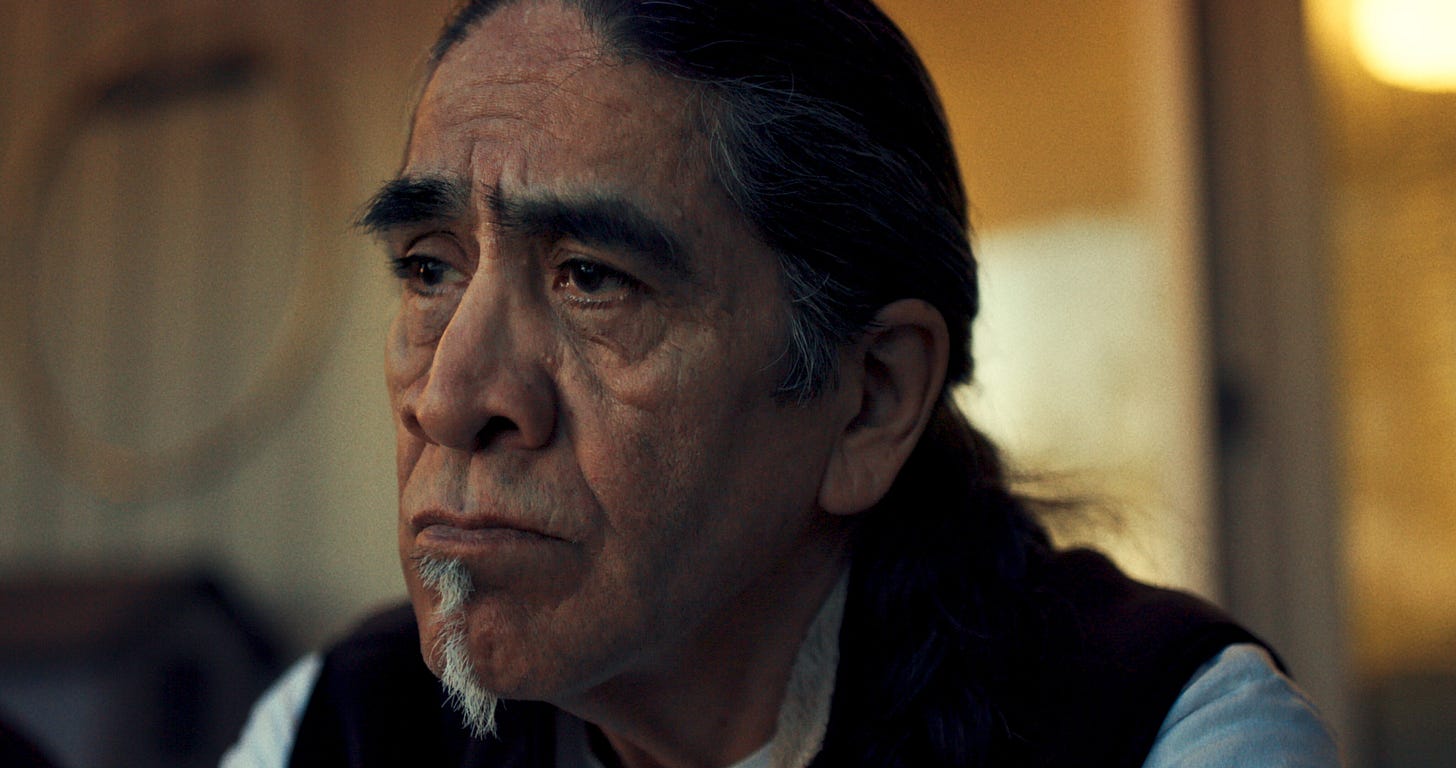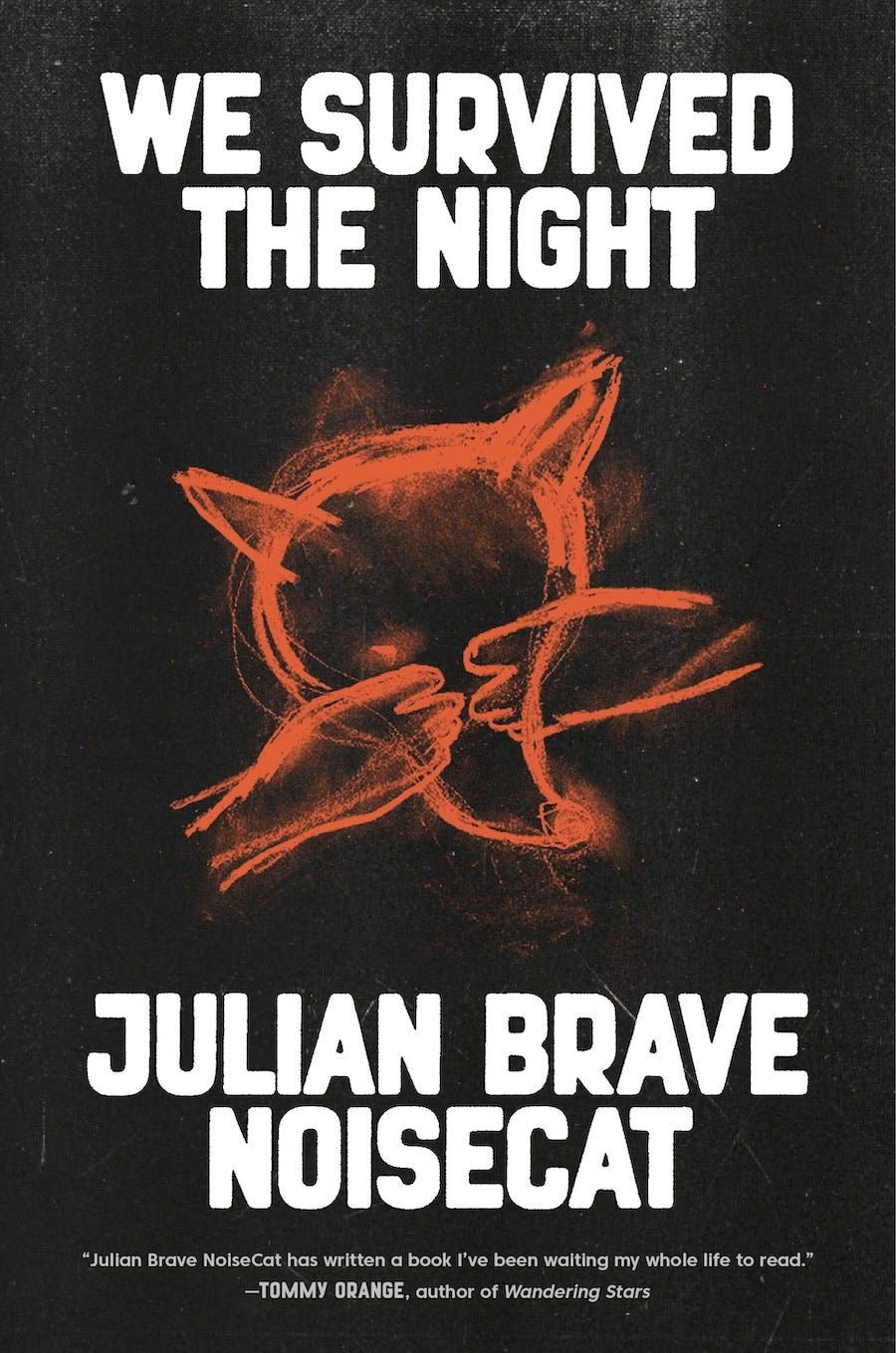Whose stories make up the American story?
How Julian Brave NoiseCat's "We Survived the Night" weaves together family tales, myth and history to tell the story of Native people who are very much still here.
At a little after 11 p.m. on August 16, 1959, a night watchman named Tony Stoop was patrolling the grounds of St. Joseph’s Mission in British Columbia. He pulled around back and turned off his car’s engine to inspect the grounds on foot. Stoop heard a “tiny, eerie cry” that at first sounded like a cat. Stoop’s job was to make sure all was quiet at the residential school, that “the Indian kids weren’t up to any Indian mischief, like stealing food or running away.” The night watchman pulled out his flashlight and followed the sound of the wail to an incinerator used to burn the mission’s trash. When Stoop pried open the incinerator and pointed his flashlight inside, “Somewhere near the top of the pile was an ice cream carton, repurposed as a makeshift wastebasket and discarded no more than twenty minutes before…Within was a newborn. And he was my father.”
Ed Archie NoiseCat — who went on to become a prominent artist — had narrowly escaped becoming a victim of the residential schools, the forced-attendance boarding schools established across Canada (and the U.S.) to erase Native language and identity — a “cultural genocide,” as determined by the Canadian National Centre for Truth and Reconciliation. As his son, Julian Brave NoiseCat, writes:
The Indian residential schools were, in the words of one of their Canadian architects, designed to “get rid of the Indian problem.” I think, on some basic level, society knew what it was doing with Indians. It was stamping out all the Indian in us and throwing us away. And eventually, that’s what we started doing to ourselves.
Kyéze remains the only person ever punished for the infanticides perpetrated at St. Joseph’s. And Dad is the only known survivor of the school’s incinerator.
This is the beginning of the story Julian Brave NoiseCat tells in We Survived the Night, the Ink Book Club’s November pick, and in the documentary film Sugarcane, co-directed with Emily Kassie. It’s the starting point for NoiseCat’s reconnection with his father and rediscovery of his family’s story, and a way for him to understand and tell the history of the indigenous peoples of North America — who, despite centuries of colonialist attempts at erasure, are very much still here.
[T]he Indian world is alive and well. It is vast, with over 1,200 federally recognized Indigenous nations spread across the United States and Canada. It is transnational, with most Indians considering the “medicine line” between the two countries little more than an inconvenience. And it is interconnected. One time I was watching a TV series called Alaska Daily with a girlfriend who was Tlingit and Haida. Just a few minutes in, we realized my cousin was the costar, and her cousin designed the costume my cousin was wearing. My ex is from Alaska. My family is from British Columbia. Yet onscreen and on the couch, the branches of our family trees intertwined. As our elders often say at the conclusion of their prayers, “All my relations.” Because for us, being related still means something.
Julian Brave NoiseCat will be our Ink Book Club guest twice in the coming weeks, first on Wednesday, November 19, at 12:30 p.m. Eastern, and then again on Wednesday, December 3, also at 12:30 p.m. Eastern. He is not just an author and filmmaker, but a journalist, activist, storyteller (and a champion powwow dancer too), so there will be a lot to discuss.
So pick up your copy of We Survived the Night, and if you want to jump into the story more quickly, we encourage you to watch Sugarcane (streaming on Hulu, or you can rent it from Apple TV, Fandango, or Prime Video). Either way, let us know your reactions, thoughts, and questions in the comments. And below, for our Book Club members, we’ve got some questions of our own to get you thinking as you begin reading.
The Ink Book Club is open to all paid subscribers to The Ink. If you haven’t yet become part of our community, join today. And if you’re already a member, consider giving a gift or group subscription.





